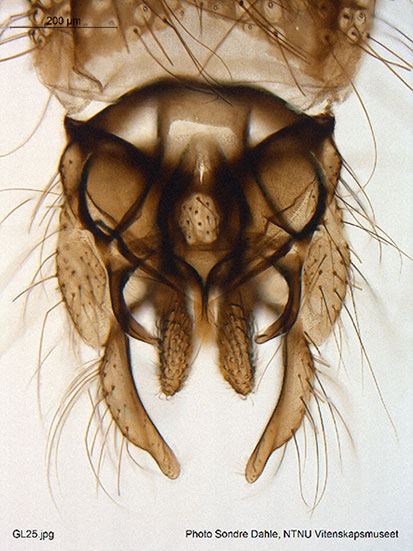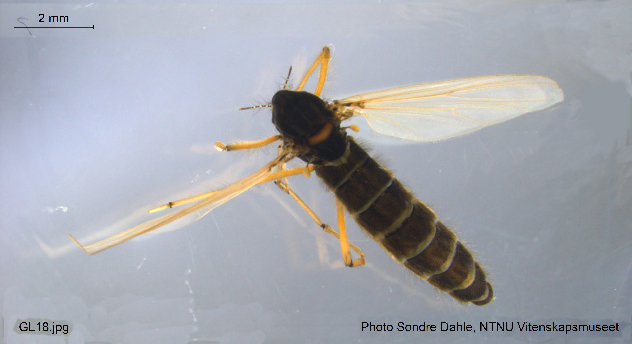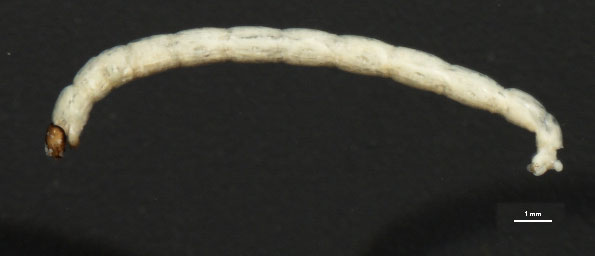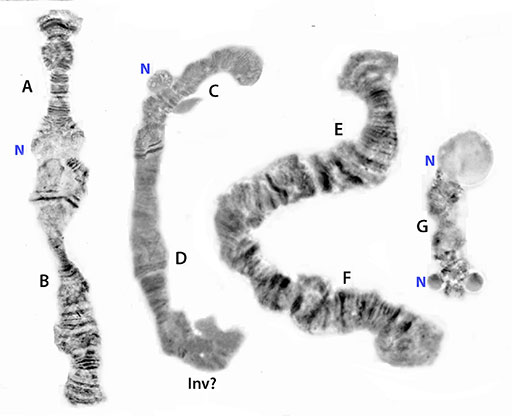Species 5e C. species 5eAdults: From photographs in Bin BOLD:AAG5437 Male Dark. L.R. about 1.0.  From BOLD GL25  From BOLD GL18 Wing length about 5.2 mm, width about 1.4 mm; VR about 1.07; anterior veins moderately darkened. Legs yellowish, with darkened knees. Fourth instar larva:  From BOLDhlc-30527 (labelled as C. pilicornis) A medium sized (12.3-13.2 mm) salinarius-type larva. Dorsal anal tubules shorter but wider than the ventral pair (480x300 vs. 610x210 µm) (below).  Distance between antennal bases sometimes greater and sometimes about the same as that between the S4 setae or up to 21% greater; setae separated by about 0.72 of the frontoclypeus width. Mentum (Fig. d) with 4th laterals slightly reduced (type I-II), although worn in available specimens, the c1 tooth is high, with relatively well separated c2 teeth (i.e type III). Ventromental plates (Fig. e)separated by about 0.4 of the mentum width, with about 46-56 striae. There are about 7 notches (or teeth?) at the inner margins, VMR about 0.29-0.36. Pecten epipharyngis (Fig. a) with about 10-12 relatively broad (but worn) teeth, probably type C. Premandible (Fig. c) with teeth about equal in length; inner tooth about 2.5-3 times wider than the outer tooth. Antenna (Fig. b) has A1 about 3.5-4 times longer than wide; RO from 0.15-0.36 up from base; AR about 1.75-2.51; antennal proportions (micron); 125-147 : 32-40 : 9-11 : 13-15 : 6-10. Mandible (Fig, f) with 3rd inner tooth partially or completely separated, but only partly darkened (type II-IIIB); about 12-13 furrows on outer surface near the base and about 12-13 setae in the Pecten mandibularis. Larval characters, particularly of the antenna, are quite variable. While nothing is known of the larval habitats, it is possible that this is due to ecological difference which may influence the length of the life cycle, which is known to extend up to 7 years in some high northern species (Butler 1982), i.e. there may be members of different cohorts. Cytology: 4 polytene chromosomes with the thummi-cytocomplex arm combination AB, CD, EF, G.  Molecular sequence: Found: Greenland - Nedre Midsommer Sö, Peary Land (82.63°N, 32.50°W); Zackenberg (74.4701°N, 20.576°W)(BOLD). |
Revised: 12 December 2022
Access: Unrestricted
Copyright © 2017-2022, Jon Martin.